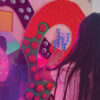Like many film-goers I have my list of favorites. Some are hilarious (Airplane), some are gripping (Wages of Fear), some are masterpieces (Godfather) and some are timeless classics (Wizard of Oz). And, then there are those that are so haunting that I cannot seem to shake loose of them. The darkly disturbing 2009 Austrian-German film, The White Ribbon, is one of the more haunting ones. Filmed beautifully in black and white with subtitles, The White Ribbon portrays the residents of a northern German village, dominated by a baron, sometime before World War I. Inhabitants of this village appear to be sliding down a slippery slope of moral depravity. Men in positions of power – a doctor and a clergyman, for example – routinely mistreat women and children. Among the most brutal scenes is one where the town’s widowed physician verbally degrades a kind woman who had faithfully served as his caretaker and mistress. Although it is only suggested, a number of the older children appear to have perpetrated despicable acts. Crops are destroyed, animals are killed, adults are injured and children are abused, including a child with Down’s syndrome. We bring our own meanings to films and modify our interpretations as time passes. After I thought about The White Ribbon for awhile, I came to the conclusion that it contained a strong message about the devastating consequences that a culture of bullying can bring about. Sometime after viewing the film, I thought more deeply about the children living in that German village. I realized that they would soon become young adults during the rise of Hitler. These children lived in an incubator in which the cruelty that they experienced, they perpetrated against unsuspecting and helpless victims. Their circumstances were such that they appeared to have been unwittingly primed to perpetrate the atrocities that would come to characterize the Third Reich. In his 2009 commentary on the White Ribbon, for the San Francisco Chronicle, filmreviewer Mike Lasalle noted that the idea of the film was “that the parenting and education German children received in the early years of the 20th century made them morally susceptible to Nazism…No child is trained to become a martinet, and no one says anything about a master race. Rather, the kids, from their elders, get quiet lessons in moral absolutism, sternness, emotional violence and heartlessness.” Seeing this film led me to wonder about the early years of the 21st century when bullying has become such a prominent thread in the fabric of our culture. And the Internet and all of its gadgets have become the tools with which people of all ages systematically degrade others. But tools are tools. A hammer can be used to build a house or to crush someone’s skull. The Internet and modern technology are not inherently evil, but are tools that can be utilized for evil ends. Although I do not know the answers to some of the questions that The White Ribbon has posed to me; the film, coupled with an acute awareness of the times we live in, brought these disturbing questions to mind: Have our children become susceptible to something ominous that we cannot yet fathom?, If so, what is driving them? And, what are the times we are living in a prequel for?
In The Media
A Cinematic Twist on Bully Culture
M
M














